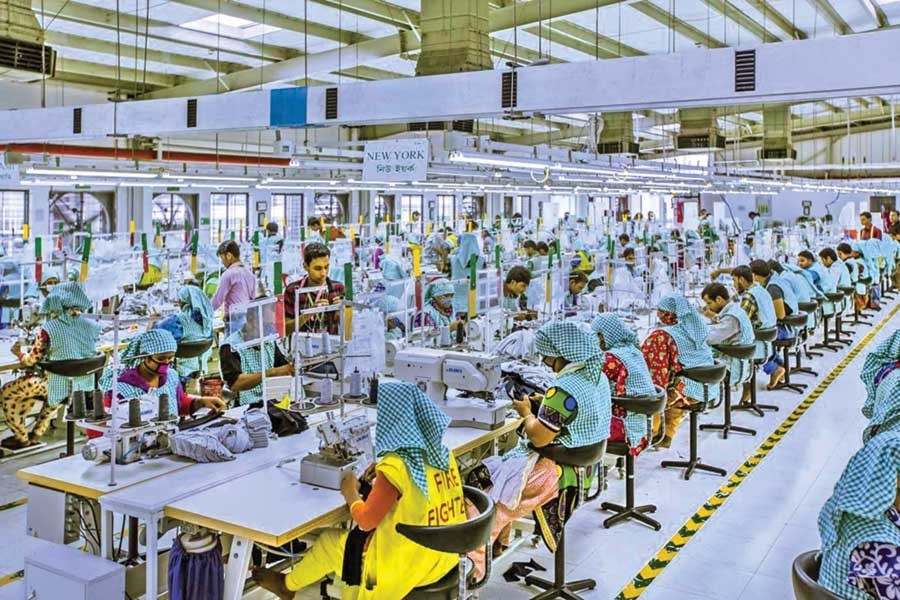
Published :
Updated :

Bangladesh is capable of meeting, to a large extent, the 40 per cent value addition requirement tagged by the USA as far as the garment items like denim and knitwear are concerned. However, some woven products might face a setback.
The US wants a minimum 40 per cent local value addition for ready-made garments (RMG) to qualify for the "Made in Bangladesh" label alongside a 35 per cent tariff on Bangladeshi exports, according to sources.
When asked, Fazlul Hoque, former president of Bangladesh Knitwear Manufacturers and Exporters Association (BKMEA), said the US is seeking at least 40 per cent value addition but it is not clear whether the percentage is the average rate or product-specific.
For example, a garment item worth Tk 100 has to be made using local raw materials worth Tk 40, which allows import of raw materials worth Tk 60, he said.
In general, it is possible for knitted items and denim garments, as 90 per cent raw materials like yarn, fabric for knit and denim are sourced from local market, he added.
"But for woven, it might not be so easy as a big percentage of the raw materials are imported ones," he said.
Talking to the FE, Shovon Islam, managing director of Sparrow Group, also echoed the views of Mr Hoque, saying the requirement might prove to be 'very problem' for woven garments as some woven items like twill pant, shirt, casual shirt and pant are produced using imported raw materials.
Most part of the fabric for such items are imported, he noted, adding that 40 per cent value addition, on an average, is possible. However, if value addition is assessed on a product-by-product basis, the woven segment faces difficulties as twill and synthetic fabrics and other woven fabrics are imported mostly from India and China.
Out of Bangladesh's total RMG exports worth US$7.0 billion, US$3.0 to US$4.0 billion comes from denim and knitted items, he said, adding that meeting the requirements for the remaining exports will require time and investment in the country's textile backward linkage industry.
According to industry insiders, value addition for woven items ranges between 25 per cent to 35 per cent.
Local RMG items' value addition remained almost static -- between 60 per cent and 64 per cent from fiscal year (FY) 2012-13 to FY2018-19, according to Bangladesh Bank data.
However, data analysis reveals a fluctuating trend: value addition declined to 56.49 per cent in FY20, then rose to 59.13 per cent in FY21. It dipped again to 54.38 per cent in FY22, before increasing to 58.11 per cent in FY23 and 60.13 per cent in FY24.
In FY24, Bangladesh received US$36.13 billion from apparel exports, while it imported raw materials worth $14.40 billion. Thus, the country's net value of RMG exports stood at $21.72 billion in FY24, showing a 60.13-per cent value addition.
The percentage remained static at 60.09 per cent during the first half (H1) of the current fiscal of 2024-25, as net RMG exports amounted to $11.94 billion against total exports worth $19.88 billion and raw-material imports worth $7.93 billion.
The central bank considered the main head value of the components (raw cotton, synthetic/viscose fibre, synthetic/mixed yarn, cotton yarn, textile fabrics, and accessories for garments) instead of only raw materials -- brought through back-to-back LCs.
Munni_fe@yahoo.com


 For all latest news, follow The Financial Express Google News channel.
For all latest news, follow The Financial Express Google News channel.